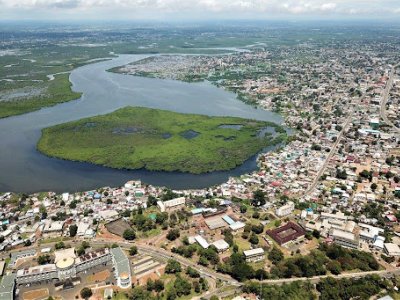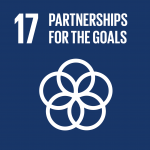Looking back on success of Liberia’s NAP process in 2019

7 February 2020, Monrovia, Liberia - Liberia’s National Adaptation Plan (NAP) process achieved major milestones in 2019 that were recently highlighted through a ‘year in review’ documentary. Looking back on the past year, the mini-documentary outlines the measures taken by the government of Liberia to advance their adaptation planning in climate sensitive sectors, working with national and technical partners.
Taking advantage of new technologies
In June last year, the government identified the importance of mobile applications for disseminating accurate climate information. With the support provided by the UN Development Programme (UNDP) and implemented by Liberia’s Environmental Protection Agency, extension officers, farmers, fisherman, media practitioners and others were granted access to WeatherBug, a market leading Android phone app that provides weather forecasts and news, relevant to a variety of sectors and trades.
In October, over 50 participants convened from eight countries to be trained on ‘how-to-use’ the WeatherBug application. The officer-in-charge of early warning systems projects from the Ministry of Transport in Liberia, Amos Baba said, “The training workshops are essential to development planning and accurate weather reporting” and believes information sharing is key for increasing awareness on climate change, which ultimately impacts everyone throughout their daily lives.
Engaging the youth in climate change adaptation
Together, Liberia’s government, the Environmental Protection Agency and collaborating partners launched the graduate program on Environmental Studies and Climate Change at the University of Liberia in September 2019. The NAP project manager, Abraham Tumbe said at the launch of the new graduate program, “stakeholders, such as the government, the legislature and development partners and many others will support this essential program to build Liberia's capacity needs in environment and climate-related sectors.”
Through these programs, the school will graduate professionals whose qualifications, skills, and competencies meet the community, county, national, and international needs. Additionally, it will offer research, community capacity building (training & technical assistance), innovation (model demonstration) and information dissemination. This graduate program feeds into Liberia’s NAP to strengthen frameworks and coordination through expanding the knowledge base for adaptation and building capacity for mainstreaming climate change adaptation into planning and budgeting processes.
Financing adaptation planning and implementation
The main objective of the country’s NAP is to formulate financing mechanisms for scaling-up adaptation in the public-private, national and international spaces. Over the second half of 2019, Liberia conducted a vulnerability and cumulative risk mapping for the entire coastal region of the country. The mapping adopted a participatory process in order to maximize the value of collaboration, local knowledge, spatial data and multimedia materials.
Assistance for Liberia’s NAP is delivered through the Green Climate Fund’s (GCF) Readiness Programme, which provides resources to help developing countries access climate finance. GCF’s support for adaptation planning is country-driven, evidence-based and gender-sensitive. Liberia’s GCF-funded NAP project, which focuses on coastal areas and is implemented with support from UNDP, convened a technical working session in 2019 to support the government of Liberia. The purpose of the workshop was to help key stakeholders, including from the private sector, better understand the establishment of an effective and functional system for the tracking of climate finance and the monitoring of climate change interventions in the country. The working session identified common criteria for determining climate finance, adaptation and mitigation interventions and finances. Identifying suitable software and different types of platforms for the monitoring climate change interventions and tracking climate finance was agreed upon during this session. See highlights from the coastal adaptation project in this photo story: ‘Defending the coast’.
Climate-induced natural hazard preparedness
As 2019 came to a close, Liberia’s NAP produced an annual report that covered a stocktaking of common challenges, risks and successes. The report reflected the reality of climate change as a national priority. Liberia is exposed to many hydro-meteorological hazards, such as floods, windstorms and coastal erosion, which can be compounded and intensified by climate change. These natural hazards have had significant negative impacts on local communities livelihoods, specific sectors and overall national economic performances.
The National Disaster Management Agency of Liberia was mandated to lay down policy plans and guidelines for disaster management to ensure timely and effective preparedness, response, recovery, as well as prevention and mitigation to disasters. UNDP and Liberia’s Ministry of Mines and Energy organized a local stakeholders consultation workshop. The workshop was centered on the presentation of a strategy to local authorities and community leaders.
The main objective of this strategy was to support Liberia establish a national adaptation planning process that contributed and built upon existing development planning strategies to implement priority adaptation actions. The strategy was co-developed with representatives from all sectors. With financial and technical support from UNDP, the National Disaster Management Agency led a multidisciplinary assessment team composed of four working groups to develop, refine and undertake further broad consultation on the strategy.

